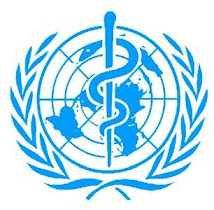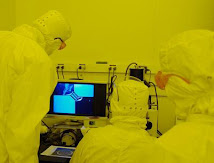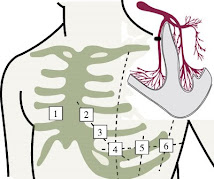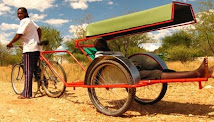Frequently Asked Questions
Q. What is dengue?
A. Dengue (pronounced den' gee) is a disease caused by any one of four closely related dengue viruses (DENV 1, DENV 2, DENV 3, or DENV 4). The viruses are transmitted to humans by the bite of an infected mosquito. In the Western Hemisphere, the Aedes aegypti mosquito is the most important transmitter or vector of dengue viruses, although a 2001 outbreak in Hawaii was transmitted by Aedes albopictus. It is estimated that there are over 100 million cases of dengue worldwide each year.
Q.What is dengue hemorrhagic fever (DHF)?
A.DHF is a more severe form of dengue infection. It can be fatal if unrecognized and not properly treated in a timely manner. DHF is caused by infection with the same viruses that cause dengue fever. With good medical management, mortality due to DHF can be less than 1%.
Q.How are dengue and dengue hemorrhagic fever (DHF) spread?
A. Dengue is transmitted to people by the bite of an Aedes mosquito that is infected with a dengue virus. The mosquito becomes infected with dengue virus when it bites a person who has dengue virus in their blood. The person can either have symptoms of dengue fever or DHF, or they may have no symptoms. After about one week, the mosquito can then transmit the virus while biting a healthy person. Dengue cannot be spread directly from person to person.
Q.What are the symptoms of the disease?
A. The principal symptoms of dengue fever are high fever, severe headache, severe pain behind the eyes, joint pain, muscle and bone pain, rash, and mild bleeding (e.g., nose or gums bleed, easy bruising). Generally, younger children and those with their first dengue infection have a milder illness than older children and adults.
Dengue hemorrhagic fever is characterized by a fever that lasts from 2 to 7 days, with general signs and symptoms consistent with dengue fever. When the fever declines, symptoms including persistent vomiting, severe abdominal pain, and difficulty breathing, may develop. This marks the beginning of a 24- to 48-hour period when the smallest blood vessels (capillaries) become excessively permeable (“leaky”), allowing the fluid component to escape from the blood vessels into the peritoneum (causing ascites) and pleural cavity (leading to pleural effusions). This may lead to failure of the circulatory system and shock, followed by death, if circulatory failure is not corrected. In addition, the patient with DHF has a low platelet count and hemorrhagic manifestations, tendency to bruise easily or other types of skin hemorrhages, bleeding nose or gums, and possibly internal bleeding.
Q.What is the treatment for dengue?
A. There is no specific medication for treatment of a dengue infection. Persons who think they have dengue should use analgesics (pain relievers) with acetaminophen and avoid those containing aspirin. They should also rest, drink plenty of fluids, and consult a physician. If they feel worse (e.g., develop vomiting and severe abdominal pain) in the first 24 hours after the fever declines, they should go immediately to the hospital for evaluation.
Q.Is there an effective treatment for dengue hemorrhagic fever (DHF)?
A. As with dengue fever, there is no specific medication for DHF. It can however be effectively treated by fluid replacement therapy if an early clinical diagnosis is made. DHF management frequently requires hospitalization. Physicians who suspect that a patient has DHF may want to consult the Dengue Branch at CDC, for more information.
Q. Where can outbreaks of dengue occur?
A.Outbreaks of dengue occur primarily in areas where Ae. aegypti (sometimes also Ae. albopictus) mosquitoes live. This includes most tropical urban areas of the world. Dengue viruses may be introduced into areas by travelers who become infected while visiting other areas of the tropics where dengue commonly exists.
Q.What can be done to reduce the risk of acquiring dengue?
A.There is no vaccine for preventing dengue. The best preventive measure for residents living in areas infested with Ae. aegypti is to eliminate the places where the mosquito lays her eggs, primarily artificial containers that hold water.
Items that collect rainwater or to store water (for example, plastic containers, 55-gallon drums, buckets, or used automobile tires) should be covered or properly discarded. Pet and animal watering containers and vases with fresh flowers should be emptied and cleaned (to remove eggs) at least once a week. This will eliminate the mosquito eggs and larvae and reduce the number of mosquitoes present in these areas.
Using air conditioning or window and door screens reduces the risk of mosquitoes coming indoors. Proper application of mosquito repellents containing 20% to 30% DEET as the active ingredient on exposed skin and clothing decreases the risk of being bitten by mosquitoes. The risk of dengue infection for international travelers appears to be small. There is increased risk if an epidemic is in progress or visitors are in housing without air conditioning or screened windows and doors.
Q.How can we prevent epidemics of dengue hemorrhagic fever (DHF)?
A.The emphasis for dengue prevention is on sustainable, community-based, integrated mosquito control, with limited reliance on insecticides (chemical larvicides, and adulticides). Preventing epidemic disease requires a coordinated community effort to increase awareness about dengue fever/DHF, how to recognize it, and how to control the mosquito that transmits it. Residents are responsible for keeping their yards and patios free of standing water where mosquitoes can be produced.























Tidak ada komentar:
Posting Komentar